Shop in-store or online
Find our fabric store at ABQ Sewing Studio at 15 Centre Street W in Strathroy, Ontario to shop in person, or shop fabric online.
The best fabric choices to make bags, quilts, garments, and household items
It’s important to use the best fabric type for each project. Fabrics vary. Some are made of natural fibers and some are man-made. Some have more body with a crisp finish, some drape softly and some have a plush finish. Some are specific to quilting or to bag making, others are better used in garment construction.
We have a wide variety of fabrics to choose from at shop.amongbrendasquilts.com and not all of them are quilter’s cotton.
That’s why I’d like to take the opportunity to tell you a little about each type of fabric that we carry.
Cottons
The cotton used to make quilter’s cotton mostly comes from India, Pakistan and China. Currently there is some uncertainty in the market and we will likely see prices rise in the near future. The farmers of India have been asked to grow rice in place of cotton due to the dire food shortages facing the poor there. Much of the surplus rice that has been stored for food security is being used to produce Ethanol for the making of hand sanitizer during the Covid 19 crisis. Nothing is unaffected during these unprecedented and uncertain times.
Quilter’s Cotton

Quilter’s cotton is a plain-woven fabric, meaning a warp thread goes over a weft thread.
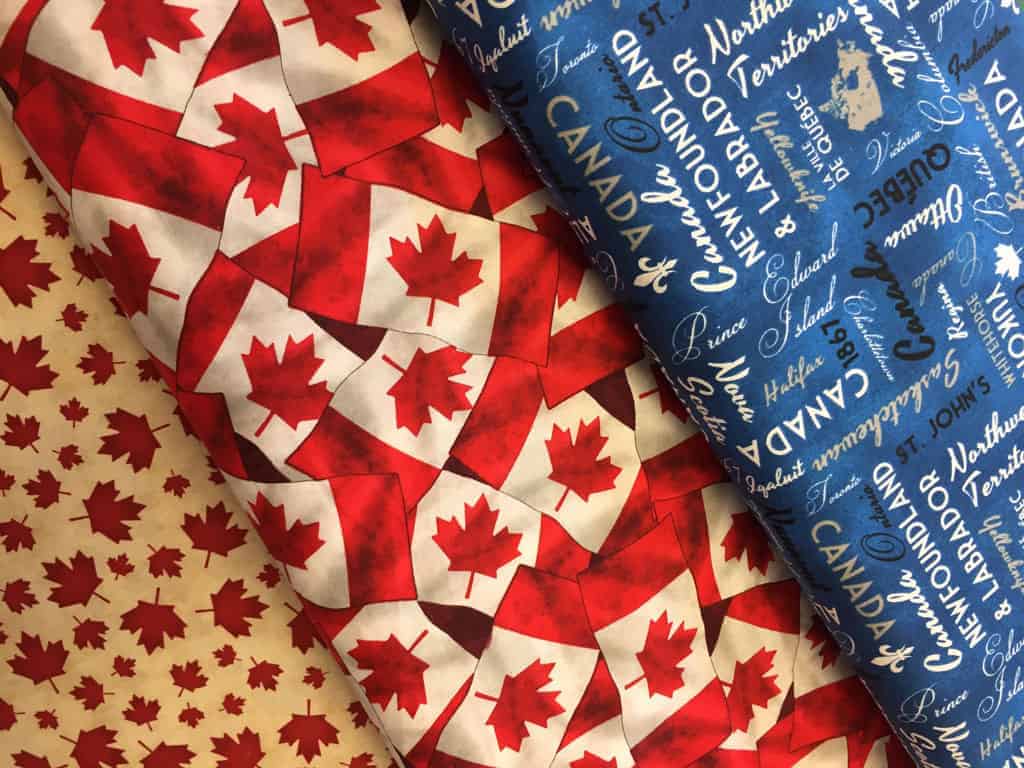
If it’s a printed quilter’s cotton, like those you see here, the pattern is applied in a factory after the fabric is woven.
Quilter’s cotton can be used for garment construction and we carry many patterns where its use is appropriate.
Shot Cotton

Other quilter’s cotton, like our shot cottons, have one color of warp thread and another color of weft thread, which gives the fabric a shimmering look and terrific body. Sometimes the effect is very subtle but you can see what I mean in this blue example where navy and peacock threads are used. We carry over 30 colors of this lovely fabric.
Flannel
Flannel is another type of quilter’s cotton. Some flannel has one napped side but both sides can be brushed for a really luxurious feel. Most of our high-quality flannels are brushed on both sides, which makes them ideal for super cozy pyjama bottoms and robes – and of course for quilts!
The soft nap on flannel is created by raising the fibers by brushing with wire bristles.
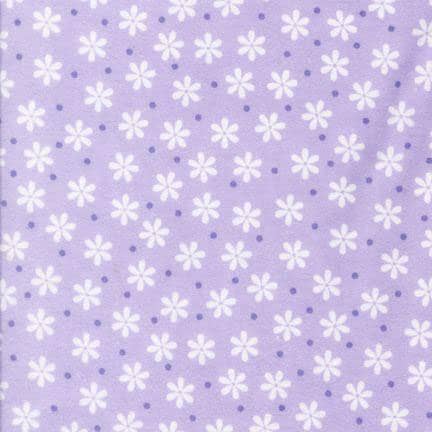
The pattern on flannel can be made by using various colors of woven threads (like a buffalo plaid) or it can be surface printed like this pretty mauve example.
Recommendations for sewing with cotton
Both quilter’s cottons and flannels are generally about 42” – 44” wide making them easy to handle on a cutting board. Cottons specific to garment making are often wider so there is less waste when cutting out patterns.
Quilter’s cottons when washed can shrink, between 3 – 5% – more if they are flannel. It is a good idea to wash your cotton before use to remove any sizing, anti-fungals or pesticides applied to them – and to shrink your fabric. I’ll admit, I don’t always do what I say! Here’s an article about fabric preparation.
You may also have fabrics in your stash that have ‘fugitive’ dyes. This is a cute term meaning the fabric dye runs. Not so cute if this happens after your quilt is made!
Lawn
The term lawn comes from the city in France “Laon” where linen lawn was first made. In years gone by lawn fabric was made of linen, but today this soft, silky fabric is made from extremely fine plain-woven cotton.
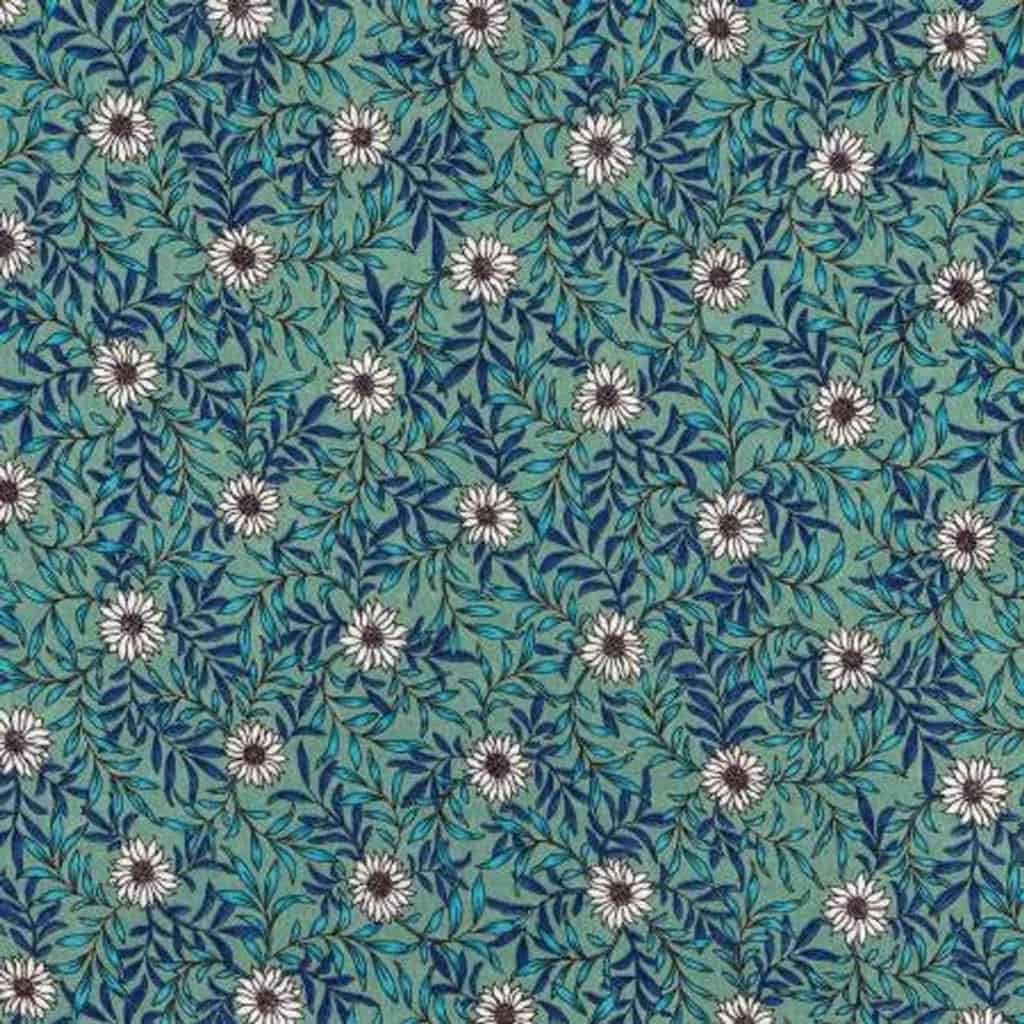
Lawn fabric is very light weight, perfect for a summer shirt a lined skirt or a lightweight flowing dress. It has a very fine weave and can be almost transparent.
Rayon
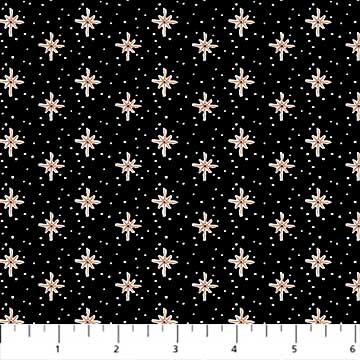
Rayon fabric is very light weight, perfect for a summer shirt a lined skirt or a lightweight flowing dress. It has a very fine weave and can be almost transparent. Ours is not so don’t worry about see-thru clothes!
Recommendations for sewing with rayon
- The fabric itself has a slippery feel and it is recommended that you starch the fabric before cutting to make handling the rayon easier.
- Rotary cutting is best because of rayon’s slipperiness.
- Use a finer needle when sewing and fine pins.
- Our rayons can be washed in a gentle cycle in cold water.
- Never put rayon in the dryer as it will shrink considerably.
Linen/Cotton Blends
We have several different options in this department. These fabrics are used for garment making, bag making, or home decor projects. See patterns I’ve designed for bags, quilts, and home decor.
These blends are also great to embroider upon. We have several easy-to-wear garment samples in the shop made with these fabrics.

Our Linen/Cotton blends are 55% Linen and 45% cotton. Some, like the Essex Yarn Dyed line, have a different color for the warp and weft threads. This fabric is about three times heavier in weight than quilters cotton.
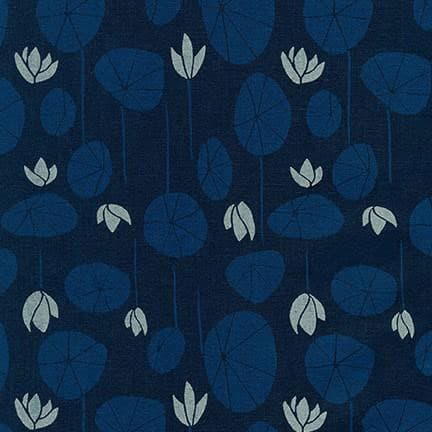
Some of our linen blends are surface printed.
Wash cold and dry on a low cycle or hang to dry.
We also have Linen/Cotton blends with a hint of sparkle coming from the 50% Linen, 40% Cotton and 10% Lurex blend. These fabrics can be washed cold on a delicate cycle and dried on a low cycle or you can hang to dry.
Linen by itself is a short staple fiber (shorter fibers mean more breakage) and it does not wear as well as cotton. That’s why it is often blended. Linen is a very absorbent fiber making it extremely comfortable in hot weather.
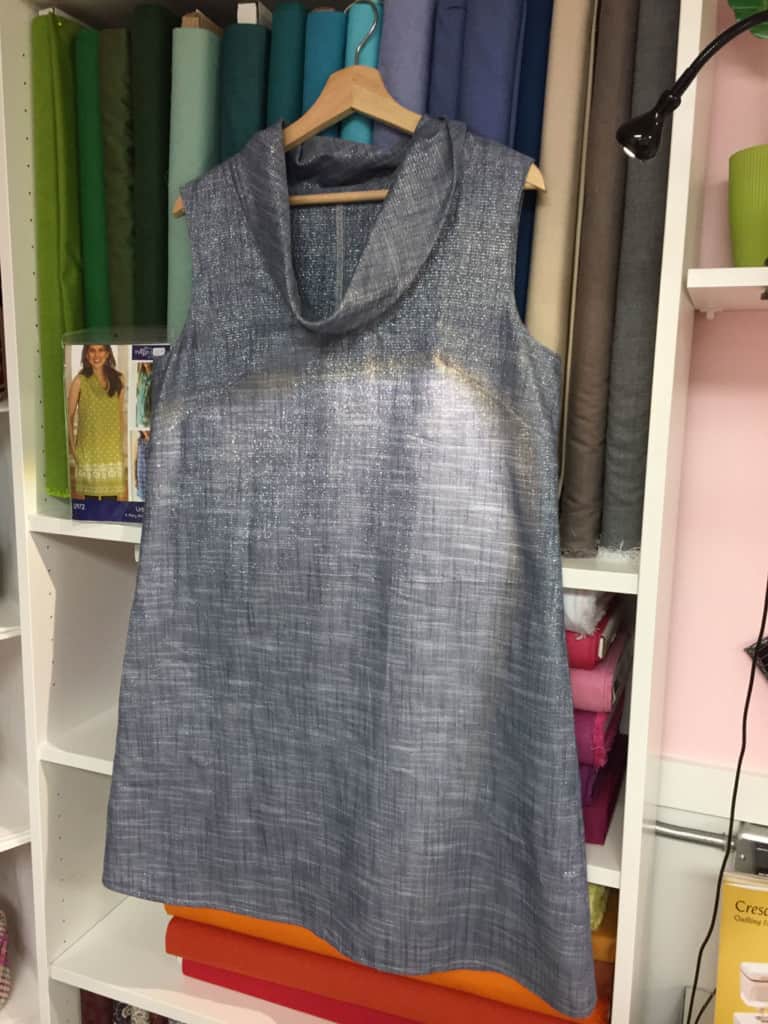
Manchester Yarn Dyed fabrics by Robert Kaufman are a 100% Cotton with the look of linen and are available at a lower price point. They feature different colored warp and weft threads.
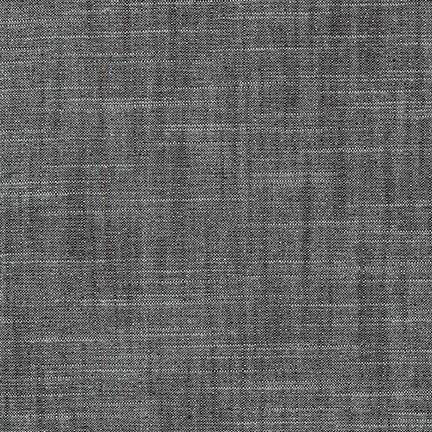
This is Manchester Yarn Dyed Metallic Onyx.
Notice the attractive slub (a thicker strand) that runs in each direction giving this fabric more texture. The Manchester line also includes some metallic options with a lurex content.
Denim
Although we don’t have much denim in stock at the moment I’d like to show you what we do have and how it can be used.
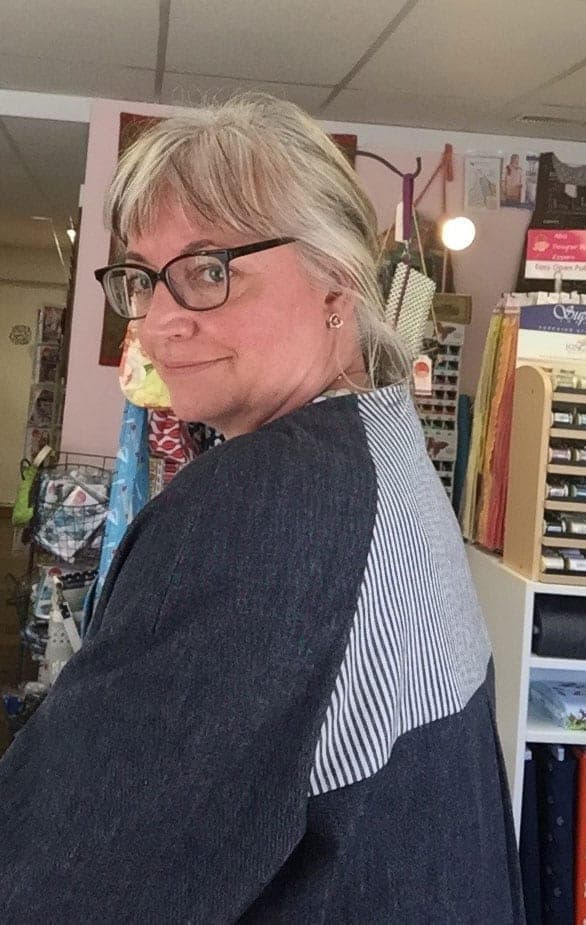
Our double-sided stretch denim has been used to make this one-of-a-kind coat that shows off the plain and the striped sides.
Denim became popular during the California Gold Rush when Levi Strauss and Jacob Davis first created the dungaree – a work pant for the gold miners. The term Jeans comes from Italy where a cotton corduroy called Jean or Jeanes was first manufactured. Originally the cotton was dyed using the natural dye of the indigo plant. Nowadays denim can be found in a full range of blues, blacks and other colors.
When sewing with denim it is recommended that you first pre-shrink your material. It can be washed in warm water and tumble dried. Use a Jeans needle because of the thickness of the fabric.
Cork

While not technically a fabric, cork is fused to a fabric backing. It is most popular with bag makers and other crafters.
Cork is a breeze to cut and sew. It’s not washable and you never want to iron it. That’s because the fabric backing might separate from the cork. There are different weights of cork, some being quite thin and others more like leather. If using the lighter weight cork you might want to add interfacing. Fuse it to the bag lining instead of the cork. Wipe cork to clean it. I use a 90/14 or 80/12 needle depending on the thickness of the cork. Check out The Cork Lover’s Bag to make your first easy to sew project.
Faux Leather – Leatherette
When I was a kid there were a lot of rather nasty leatherette products on the market. I recall sticking to the hot sweaty seat of my Mom’s woody sided station wagon. One of the names for this fake leather back then was ‘Naugahyde’. We kids were forever joking about where the rare nauga might dwell.

We have a couple of rather nice faux leather products in the store perfect for you bag makers out there. These fabrics are still made from polyurethane like the leatherette of your past, but they now are blended with polyester and viscose for a much lighter nicer feel. They, like the rare naugahyde, are fused to a knit backing to make them nice and supple. Unlike naugahyde they have a soft suede-like finish and a more natural look.
Great options if you want to spare that poor nauga from losing his Hyde! These fabrics can be hand washed in cold water and rolled in a towel to remove excess water before being hung to dry.
Batiks

Batiks have a long and colorful history. I also have a history with batiks, having created my own back in high school art class. Batiks are dyed in stages in a bath of dye using a wax resist.
Here’s how I did it way back then
It’s the same method that’s been in use in Indonesia and thereabouts for many hundreds of years.
You start with cotton that has a high thread count. Thread count is how many threads there are per square inch. (Pity the person doing the counting) The high thread count is needed so that the pattern is more distinct – less threads give a blurry pattern. The plain cotton that’s been prepared for dying is called greige goods.
If create a white pattern on your batik you draw the pattern on the greige goods using a type of stylus that holds melted wax called a tjanting. Traditionally beeswax is used. So back to high school – I hand drew my floral pattern on my length of fabric. Once the wax had hardened I cracked it a bit by handling the fabric. Then I dipped it into a dye bath and hung it to dry.
In Bali they lay the lengths of fabric in meadows to dry in the sun. I wonder if the length of the meadow often determines the length of the bolt?
After my fabric was dry I ironed the wax out of it using newsprint between the fabric and iron and between the ironing board and fabric. The paper absorbed the wax leaving me with a fabric with an almost identical pattern on the front and the back. The pattern on the back was just a wee bit more indistinct.
This is a very simplified version of batik production but understandable if you’ve never seen it done before. More wax and dyes can be applied to obtain multiple colors on the fabric. The fabric can also be block printed using a copper stamp called a cap. This speeds up the process somewhat since patterns do not have to be drawn.
Visit our online store
To help you along with all of your projects we have a great selection of garment, bag, quilting and home décor patterns available online and in the shop along with all the bits and bobs required to make your next creation uniquely yours.
Omg!! This clears soo much up for me on the different types of fabric and what projects they are good to use in. I just wished there was a way to be able to save this in pdf. so I could go back to it…
Thank you for sharing this,
Angela
Hi Angela, Hit the little printer icon at the top or bottom of the post to print.
Hi Angela, Hit the little printer icon at the top or bottom of the post to print.